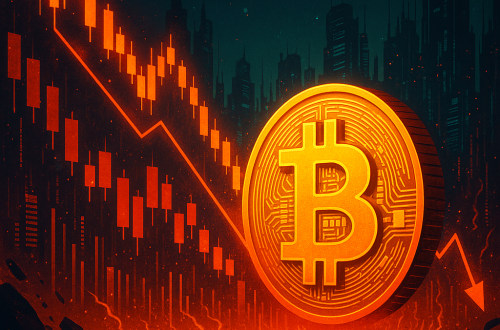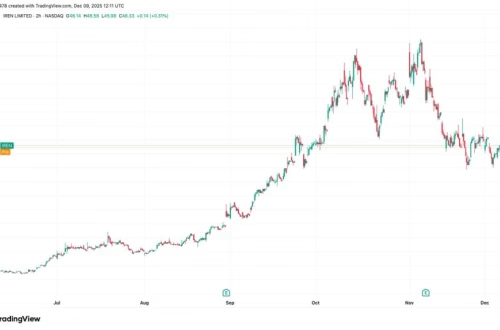how to buy bitcoin at an ATM
Summary:
Bitcoin ATMs provide a convenient way for users to buy cryptocurrency using cash or debit cards, often without requiring extensive technical knowledge. These machines are physical kiosks that allow you to exchange fiat currency for Bitcoin, which is directly sent to your digital wallet. This method is particularly useful for novices seeking quick, anonymous (in some cases), and accessible transactions. Understanding fees, security protocols, and wallet setup is critical to using Bitcoin ATMs effectively for your crypto investments.
What This Means for You:
- Accessibility Over Exchanges: Bitcoin ATMs eliminate the need for online exchange accounts, making them ideal for quick cash-to-crypto conversions. Locate a nearby ATM via platforms like CoinATMRadar, but be prepared for higher fees compared to digital exchanges.
- Privacy With Caveats: Some Bitcoin ATMs allow smaller transactions without full identity verification (under certain jurisdictional limits). Always check the machine’s KYC (Know Your Customer) requirements and have your wallet address ready on your phone for faster scanning.
- Cost Implications: Fees at Bitcoin ATMs range from 8% to 15%, significantly higher than online exchanges. Use ATMs for urgency or convenience, but prioritize exchanges for larger purchases.
- Future Outlook or Warning: Regulatory scrutiny on Bitcoin ATMs is increasing globally due to concerns over money laundering. Ensure compliance with local laws, and always verify the ATM operator’s legitimacy to avoid scams or skimming devices.
Explained: how to buy bitcoin at an ATM
Step 1: Locate a Bitcoin ATM
Use directories like CoinATMRadar or operator apps (e.g., CoinFlip, Bitcoin Depot) to find nearby machines. Filter for buy-only ATMs, check real-time operational status, and review fees beforehand.
Step 2: Prepare Your Wallet
You need a Bitcoin wallet (e.g., Exodus, Electrum, or hardware wallets like Ledger) to receive purchased Bitcoin. If you’re new, install a mobile wallet and ensure you can access its QR code feature. Paper wallets are less recommended due to security risks.
Step 3: Identity Verification (KYC)
Most ATMs require phone verification for smaller transactions (under $500–$1,000 depending on jurisdiction). Larger amounts may need government ID scans. Operators comply with Anti-Money Laundering (AML) laws, so complete prompts accurately.
Step 4: Transaction Process
1. Select “Buy Bitcoin” on the ATM’s interface.
2. Enter purchase amount in fiat or BTC terms.
3. Scan your wallet’s QR code using the ATM’s camera.
4. Insert cash or use a debit card (machine-dependent).
5. Confirm details and approve the transaction.
6. Wait 10–60 minutes for blockchain confirmation.
Step 5: Fees and Exchange Rates
ATMs charge two fees:
– Service Fee: Flat or percentage-based (5–15%).
– Exchange Spread: Markup over spot prices (1–5%).
Total costs often exceed 10%, making ATMs costlier than exchanges like Coinbase.
Limitations and Risks
Geographical Scarcity: ATMs cluster in urban areas, limiting rural access.
Transaction Caps: Daily limits range from $1,000 to $10,000, depending on KYC completion.
Security Threats: Physical ATMs may be tampered with skimmers. Always inspect the machine’s card slot and camera before use.
Best Use Cases for Bitcoin ATMs
– Urgent Purchases: Immediate crypto access without exchange delays.
– Privacy-Focused Users: Machines with no-KYC options suit small, discreet buys.
– Cash Transactions: Ideal for unbanked individuals or cash-heavy spenders.
Operator Comparisons
CoinFlip: Low fees (6.99%), 2,000+ U.S. locations.
Bitcoin Depot: Supports 7,000+ ATMs, fees ~8–15%.
LocalBitcoins (P2P ATMs): Decentralized options with variable rates.
People Also Ask About:
- Are Bitcoin ATM fees higher than exchanges?
Yes—ATM fees range from 8% to 20% due to operational costs, while exchanges like Kraken charge 0.16–1.5%. Use ATMs only for small, urgent purchases. - Do I need ID to buy Bitcoin at an ATM?
For transactions under jurisdictional limits (e.g., $900 in the U.S.), often just a phone number suffices. Larger amounts require government-issued ID. - What’s the maximum Bitcoin I can buy at an ATM?
Daily limits vary: $1,000–$3,000 without full KYC, up to $10,000 with verification. Limits reset every 24 hours. - Are Bitcoin ATMs safe?
Most are secure, but physical tampering (skimmers, malware) occurs. Use reputable operators, inspect machines, and enable two-factor authentication on your wallet. - Can I sell Bitcoin at an ATM too?
Many machines support selling Bitcoin for cash, but fees are steeper (10–20%). Verify sell functionality via the ATM’s menu before transacting.
Expert Opinion:
Bitcoin ATMs offer unmatched convenience but come with significant trade-offs, including higher fees and variable security. Experts recommend ATMs for emergency purchases or privacy-focused transactions under regulatory limits. Always cross-check exchange rates via CoinMarketCap before buying, and prioritize wallets with multi-signature security. Regulatory crackdowns on non-compliant operators are rising—avoid machines without clear licensing information displayed.
Extra Information:
- CoinATMRadar (https://coinatmradar.com): Global Bitcoin ATM locator with real-time fee comparisons and user reviews.
- Bitcoin.org Wallets (https://bitcoin.org/en/choose-your-wallet): A trusted directory of secure wallets compatible with ATM transactions.
- FinCEN Guidelines (https://www.fincen.gov): Official U.S. regulatory standards for Bitcoin ATM operators and users.
Related Key Terms:
- bitcoin atm verification process near me
- lowest fee bitcoin ATMs in [City]
- how to avoid bitcoin ATM scams
- buy bitcoin with cash anonymously
- bitcoin ATM transaction limits explained
- best Bitcoin wallet for ATM purchases
- is bitcoin ATM traceable by government
#buy #bitcoin #ATM
*Featured image provided by Pixabay



